How to Draw a Water Drop Easy
It Looks Hard, But It's Easy
It may seem like a difficult task to draw realistic water droplets. Fortunately, It's relatively simple to create this illusion in your drawing. This look is easily achieved by simply understanding the principles of how light behaves on (and actually within) a transparent object. Light behaves in a completely different manner on a transparent object than it does with a solid object.
By understanding the light's behavior and recording the correct locations of light and dark values, the illusion of water droplets is developed. Once you have a basic understanding of the location of values, then water droplets are easily added to any surface in a drawing.
How Light Behaves in a Water Droplet
Instead of bouncing off of the surface, as we see with solid objects, a good amount of light is able to penetrate a water droplet. Some light is still reflected, producing a highlight, but much of it enters the droplet. In this example, we see a direct and dominant light source originating from the right side of the picture plane. A strong highlight is clearly visible.
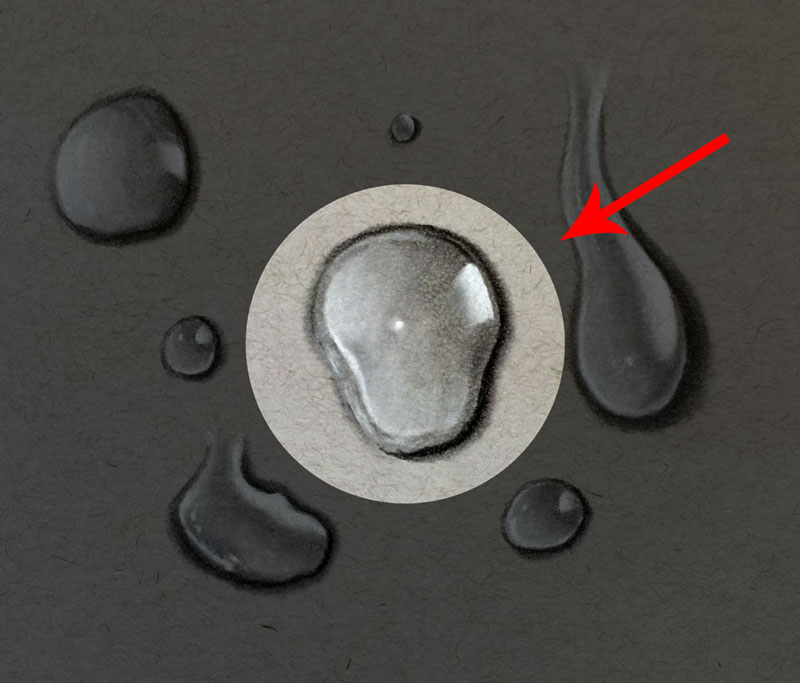
Light waves are then refracted, bending and dispersing the light within the droplet. As a result, light waves are sent to the side of the droplet, opposite of the dominant light source.
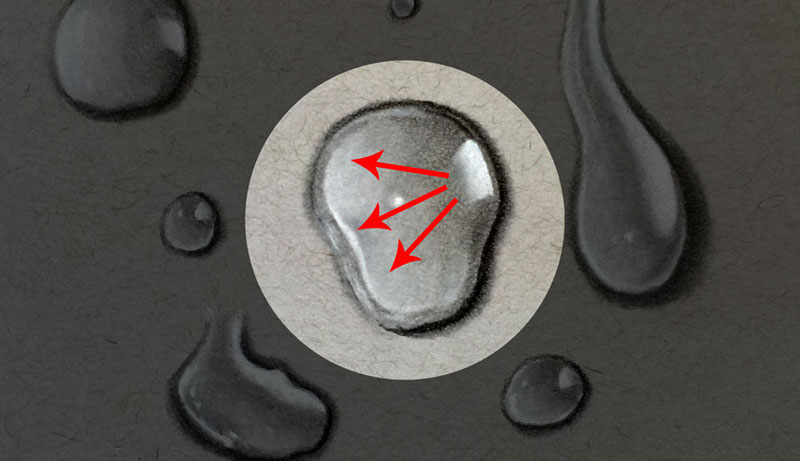
This produces an area of lighter value positioned opposite from the dominant light source. On solid objects we expect to see an area of core shadow in this location, but in this case, we see lighter values that are evenly distributed.
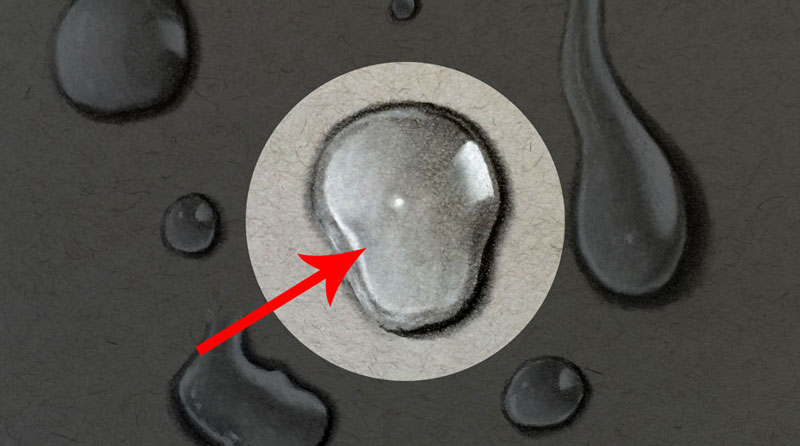
Another interesting thing happens around the strong highlight. The values are actually darker in this area instead of being lighter as we would see with a solid object.
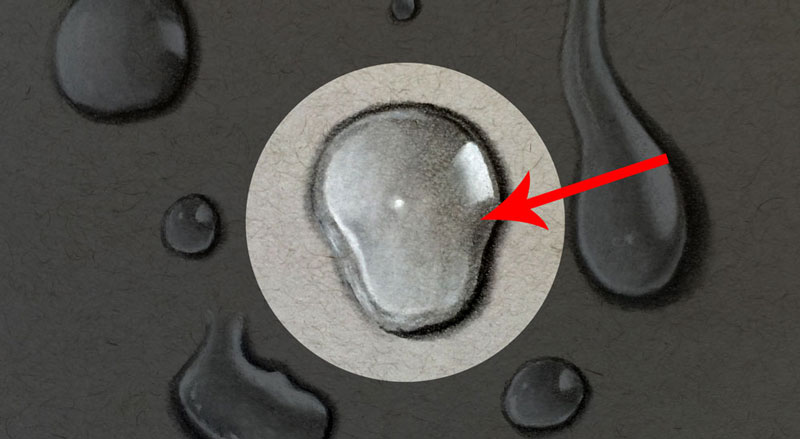
In this example, a secondary light source is also affecting the locations of value. This light source is weaker, but positioned at more extreme angle. This secondary light is originating from the lower left portion of the picture plane.
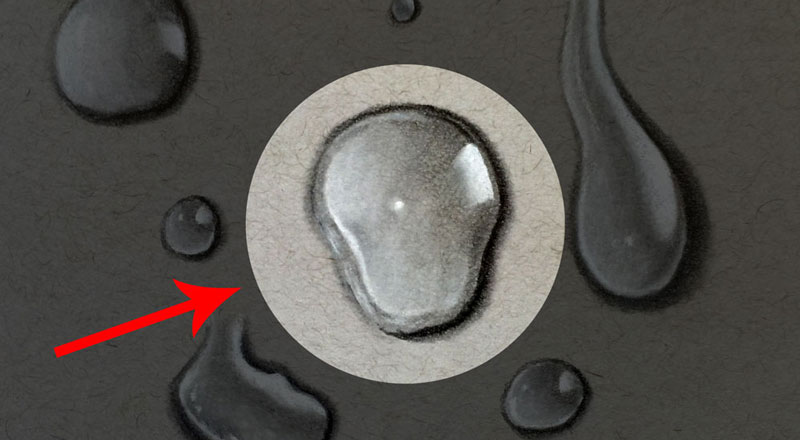
This secondary light source produces a few locations of stronger highlight on the left side of each water droplet, but has a greater affect on the locations of cast shadow. In this case, we see an area of cast shadow extending almost entirely around each droplet. The taller the water droplet is, the longer the cast shadow becomes.
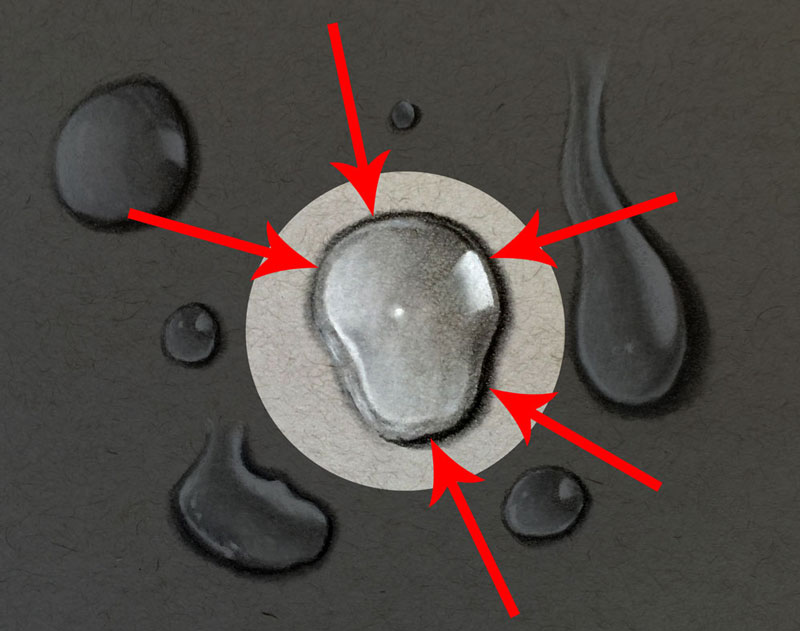
Because the dominant light source on the right is more direct and at a less extreme angle, the resulting cast shadow on the left is still visible, but not quite as long.
Drawing A Water Droplet Step by Step
After drawing simple shapes for each water droplet, we can begin the process of developing the values. We are working on a neutral gray surface so that it is a bit easier to create a full range of value within the scene. An "HB" and "4B" pencil are used to develop the darker values, while a white charcoal pencil is used to develop the lighter tones.
We'll begin with the "HB" pencil, creating darker values by making controlled, circular marks.
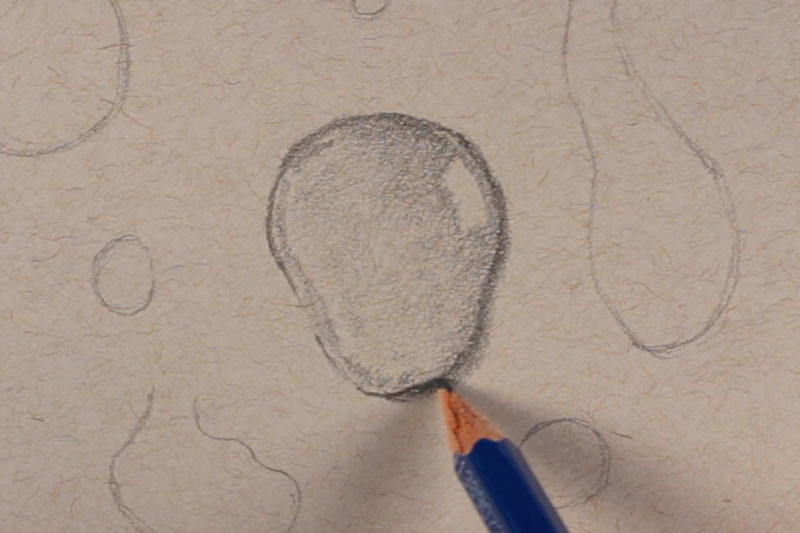
The drawing surface features a bit texture that does not result in a natural look. For this reason, we use a blending stump to smooth the application. Again, small circular strokes are made with the tool.
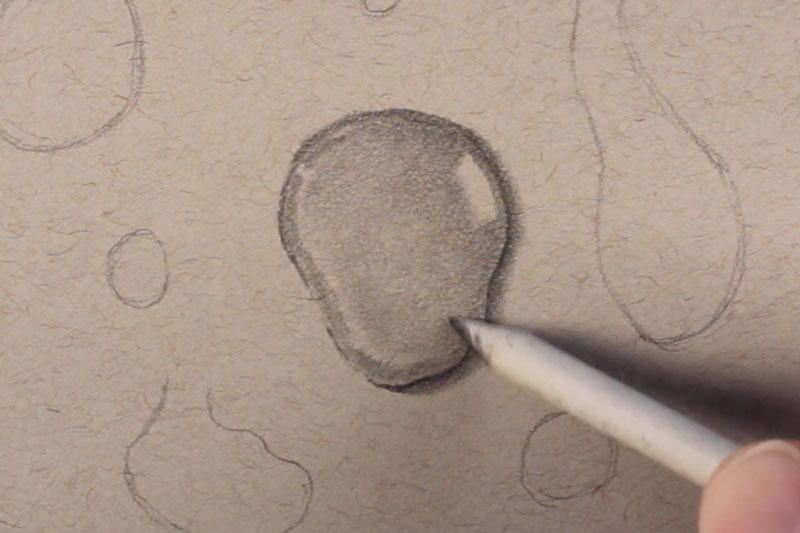
Next, the development of the lighter values begins with a light application of the white charcoal pencil. The application is much stronger in the location of intense highlight on the right side of the water droplet.
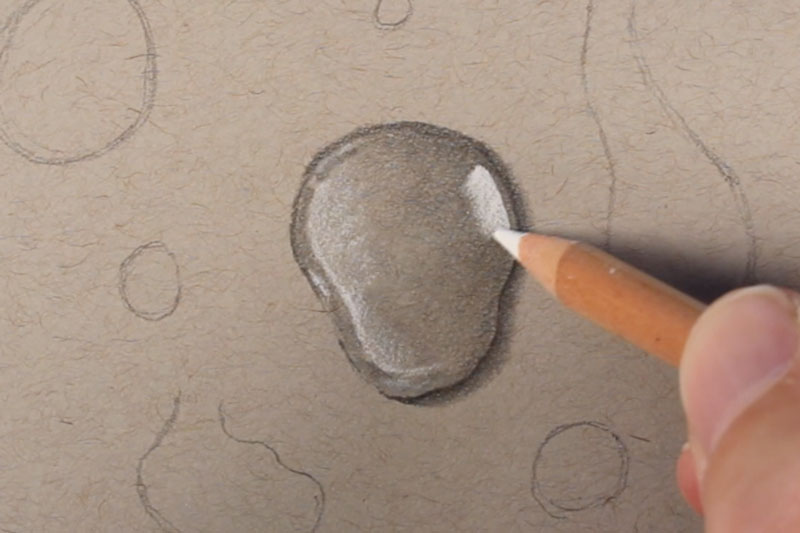
In order to keep the texture consistent, this application is also worked in the texture of the paper using a blending stump.
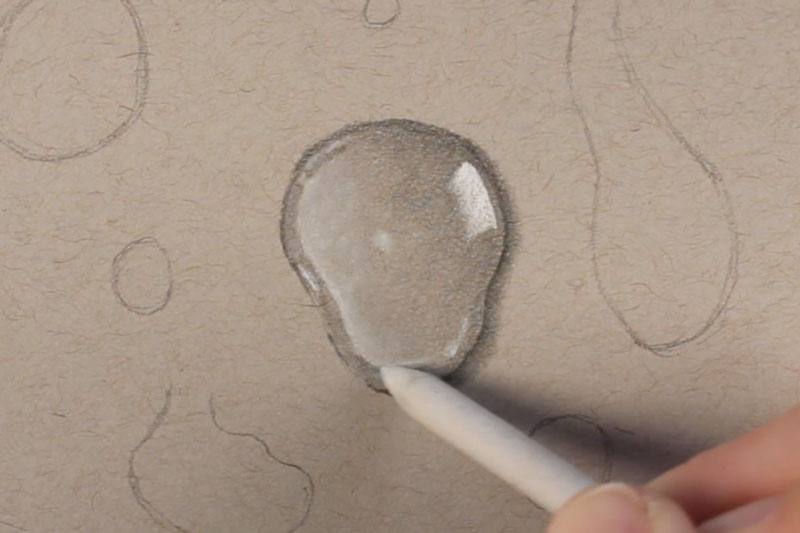
In order to create a broader range of value and to increase the contrast, a softer "4B" pencil is used to darken values, especially in the areas of cast shadow. This darker application is then blended with the blending stump.
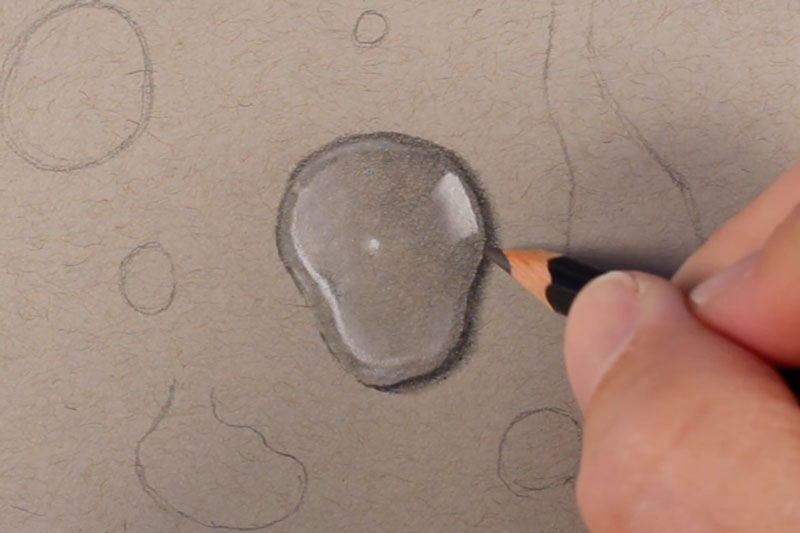
Lighter values are then enhanced with the white charcoal pencil and gently blended with the stump to complete the water droplet.
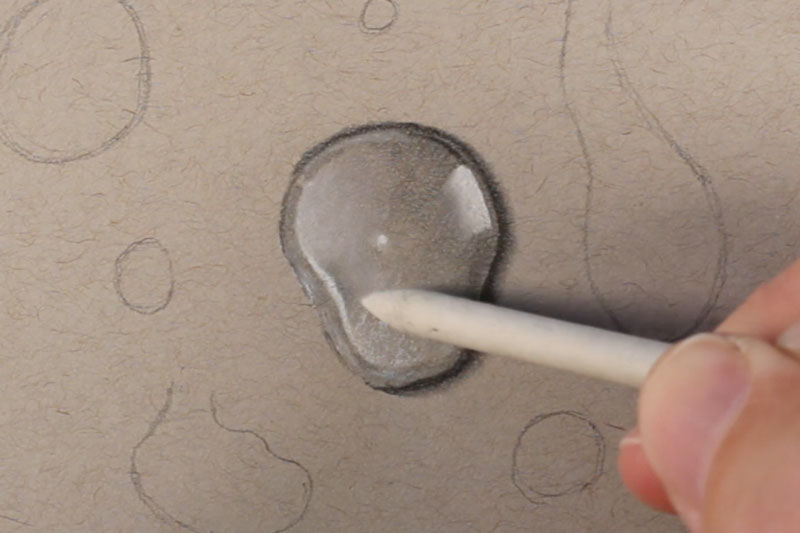
The process of developing the values continues in the same manner on the other water droplets, keeping the light consistent. Including multiple water droplets within the scene creates a more convincing image.
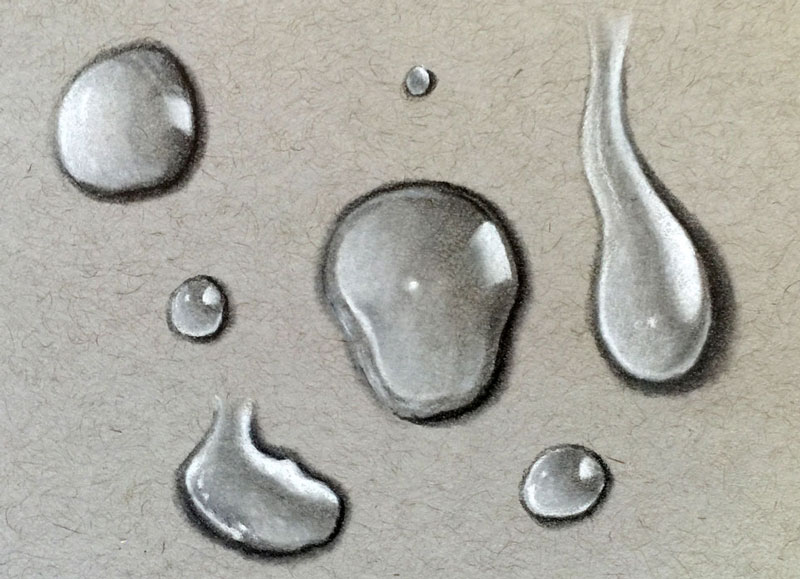
Source: https://thevirtualinstructor.com/how-to-draw-water-droplets.html